In the world’s harshest deserts, certain reptiles have developed remarkable adaptations to thrive where few others can. These creatures have evolved to survive extreme temperatures, scarce water, and minimal food sources. Each species showcases unique characteristics that allow them to endure these unforgiving environments.
Spiny-tailed Iguana (Ctenosaura defensor)

The Spiny-tailed Iguana is a hardy desert dweller with a robust, spiky tail that serves as a formidable defense against predators. This iguana’s grayish-brown body provides excellent camouflage against the rocky desert landscape. Its diet consists primarily of leaves, flowers, and fruits, though it occasionally consumes insects. Adapted to the intense heat, it remains active during the cooler parts of the day and seeks shelter in burrows during the hottest hours. This species is highly territorial, fiercely defending its burrow from intruders.
Leopard Gecko (Eublepharis macularius)
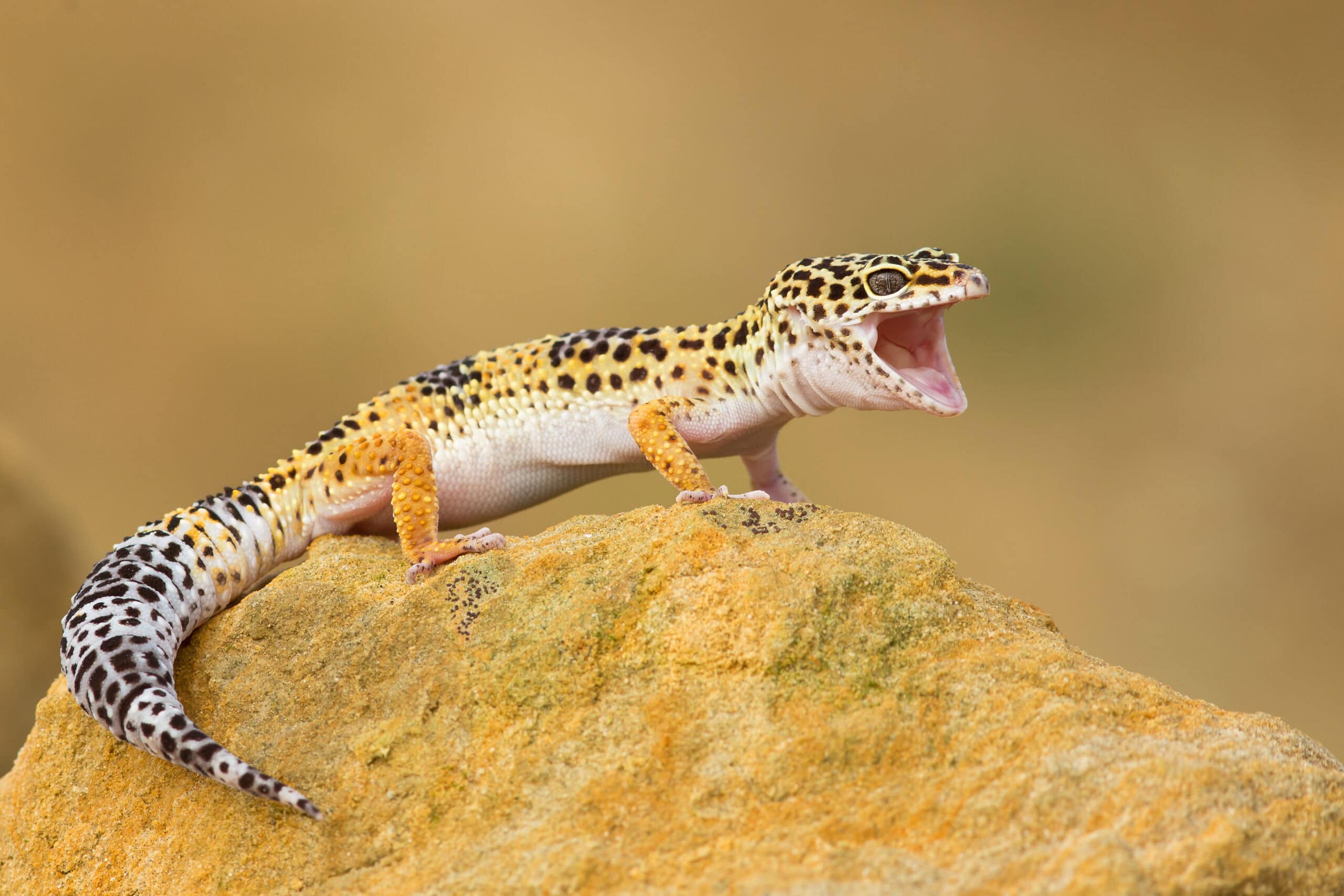
The Leopard Gecko is a small, nocturnal reptile with a thick, fat-storing tail that helps it survive long periods without food. Its yellowish skin, covered in dark spots, provides excellent camouflage among desert rocks and sand. During the day, it shelters in burrows or under rocks to avoid the scorching sun. At night, it emerges to hunt insects and small invertebrates. Its eyelids, a rare trait among geckos, protect its eyes from sand and debris.
Death Adder (Acanthophis antarcticus)
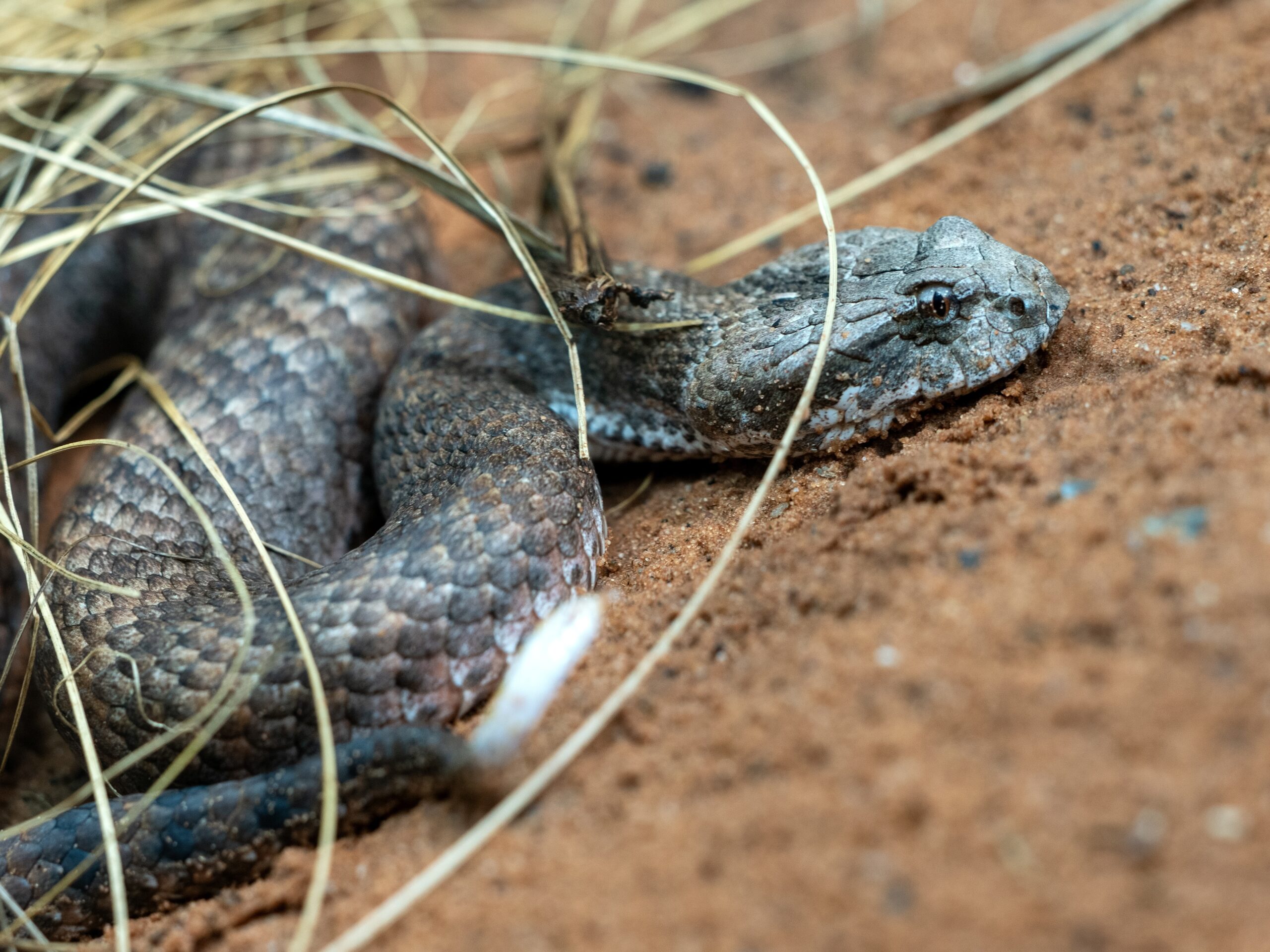
The Death Adder is a venomous snake with a short, stout body and a broad, triangular head. It possesses an extraordinary ability to remain motionless, blending seamlessly into the desert floor with its reddish-brown scales. This snake is an ambush predator, waiting patiently for unsuspecting prey to pass by before striking with lethal precision. Its venom is potent, capable of immobilizing prey almost instantly. The Death Adder’s unique hunting strategy and camouflaged appearance make it a formidable predator in its arid habitat.
Desert Iguana (Dipsosaurus dorsalis)
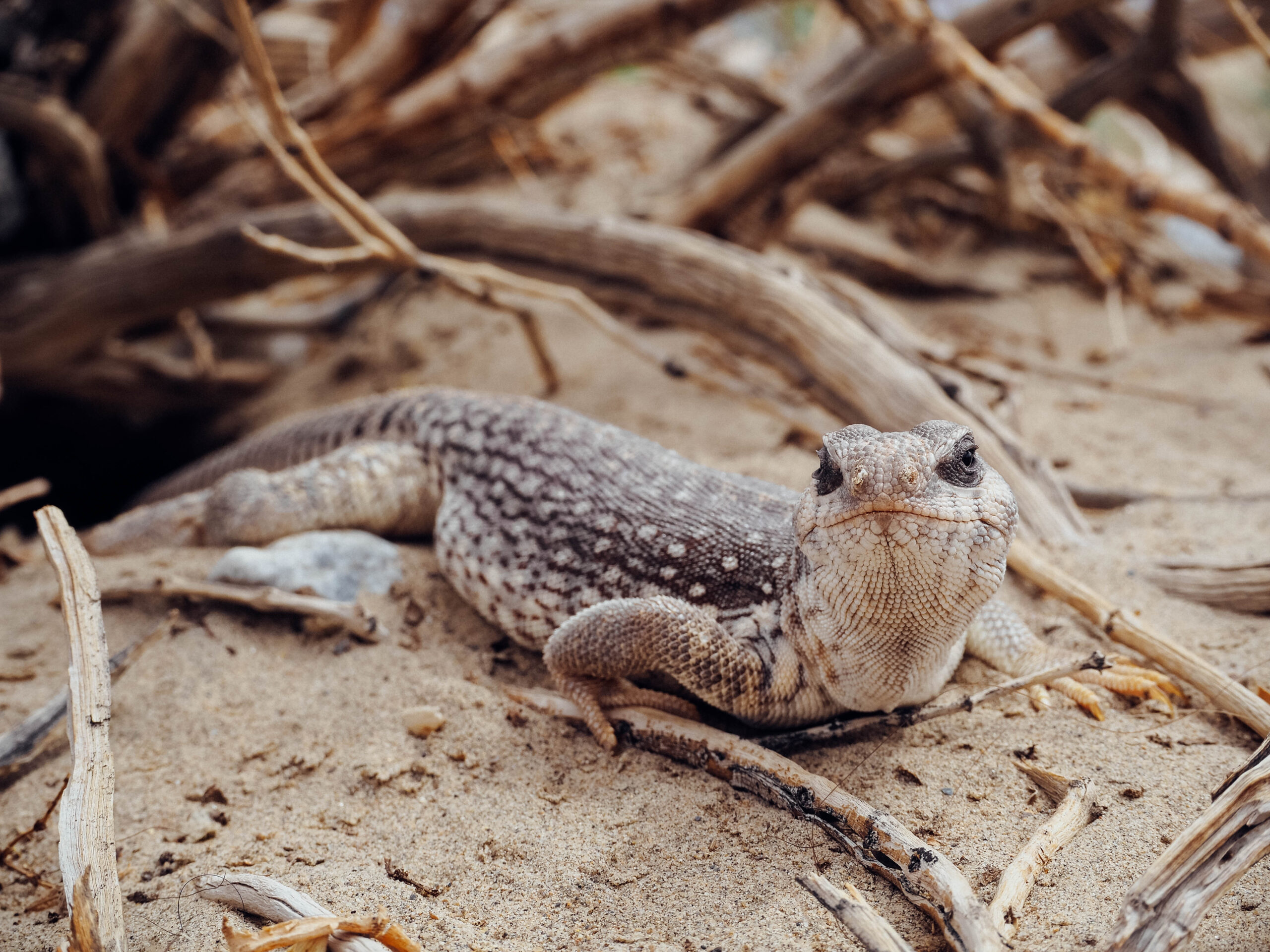
The Desert Iguana is a medium-sized lizard known for its pale coloration, which reflects the harsh desert sunlight. Its diet mainly consists of leaves, flowers, and fruits from desert plants, particularly creosote bushes. This iguana is well adapted to the desert’s temperature extremes, capable of withstanding body temperatures that would be lethal to most other animals. During the hottest part of the day, it seeks refuge in burrows to escape the heat. Agile and fast, it uses its speed to evade predators in its open desert environment.
Indian Spiny-tailed Lizard (Saara hardwickii)
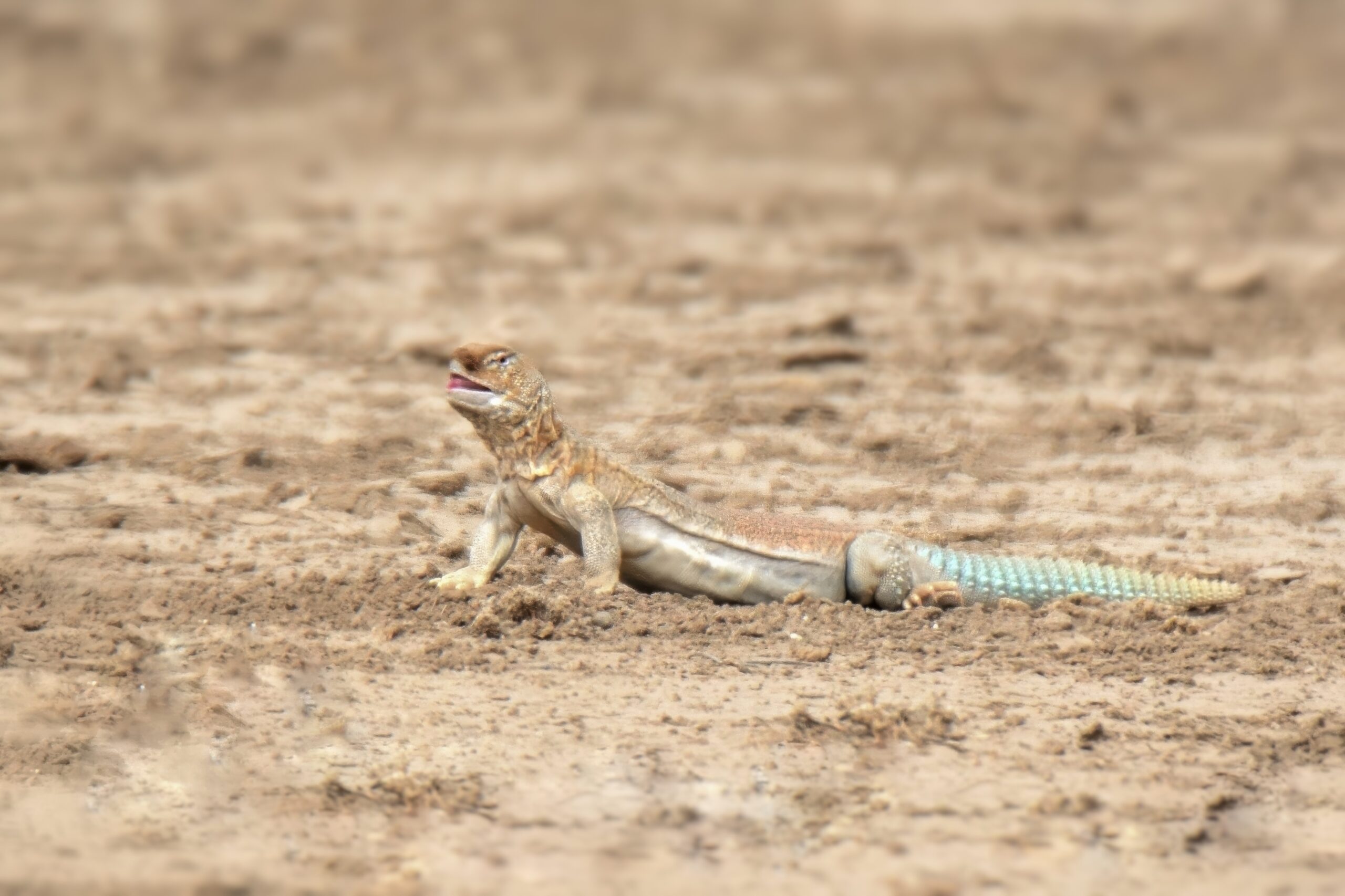
The Indian Spiny-tailed Lizard is a robust reptile with a spiny tail that it uses for defense and communication. It has a squat body with rough, scaly skin that helps conserve moisture in the arid environment. Primarily herbivorous, it feeds on desert vegetation such as grasses and leaves. This lizard is highly social, often found basking in groups during the cooler parts of the day. To escape predators and the intense heat, it retreats to deep burrows it digs in the desert soil.
Texas Horned Lizard (Phrynosoma cornutum)
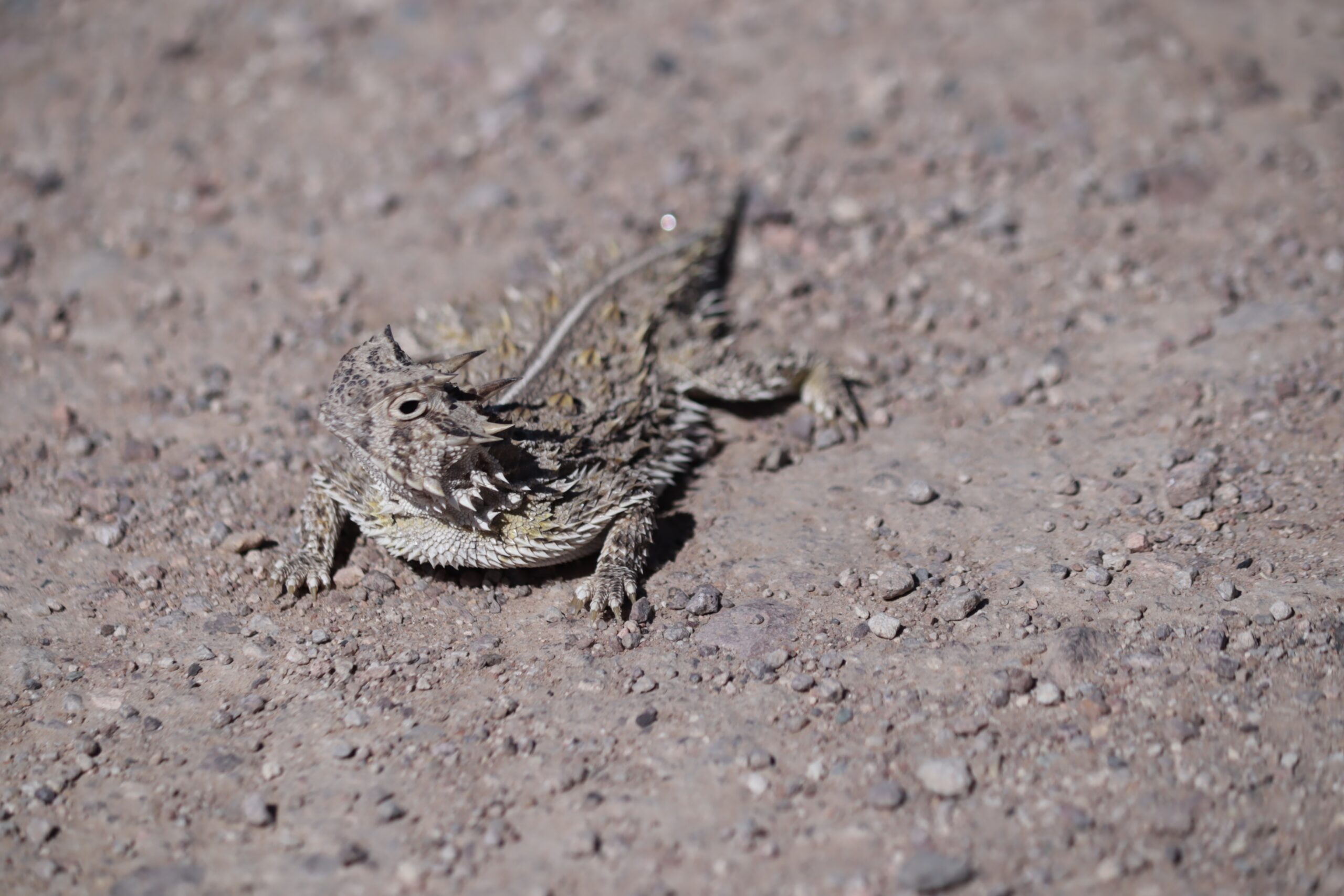
The Texas Horned Lizard is a small, flat-bodied reptile with a crown of horns on its head and spines along its back. Its coloration, which ranges from brown to sandy, allows it to blend into the desert landscape perfectly. This lizard’s primary diet is ants, and it uses its long, sticky tongue to capture them efficiently. When threatened, it has the unique ability to squirt blood from its eyes to deter predators. This adaptation, along with its camouflage and spiny armor, makes it a well-protected desert inhabitant.
Desert Monitor (Varanus griseus)
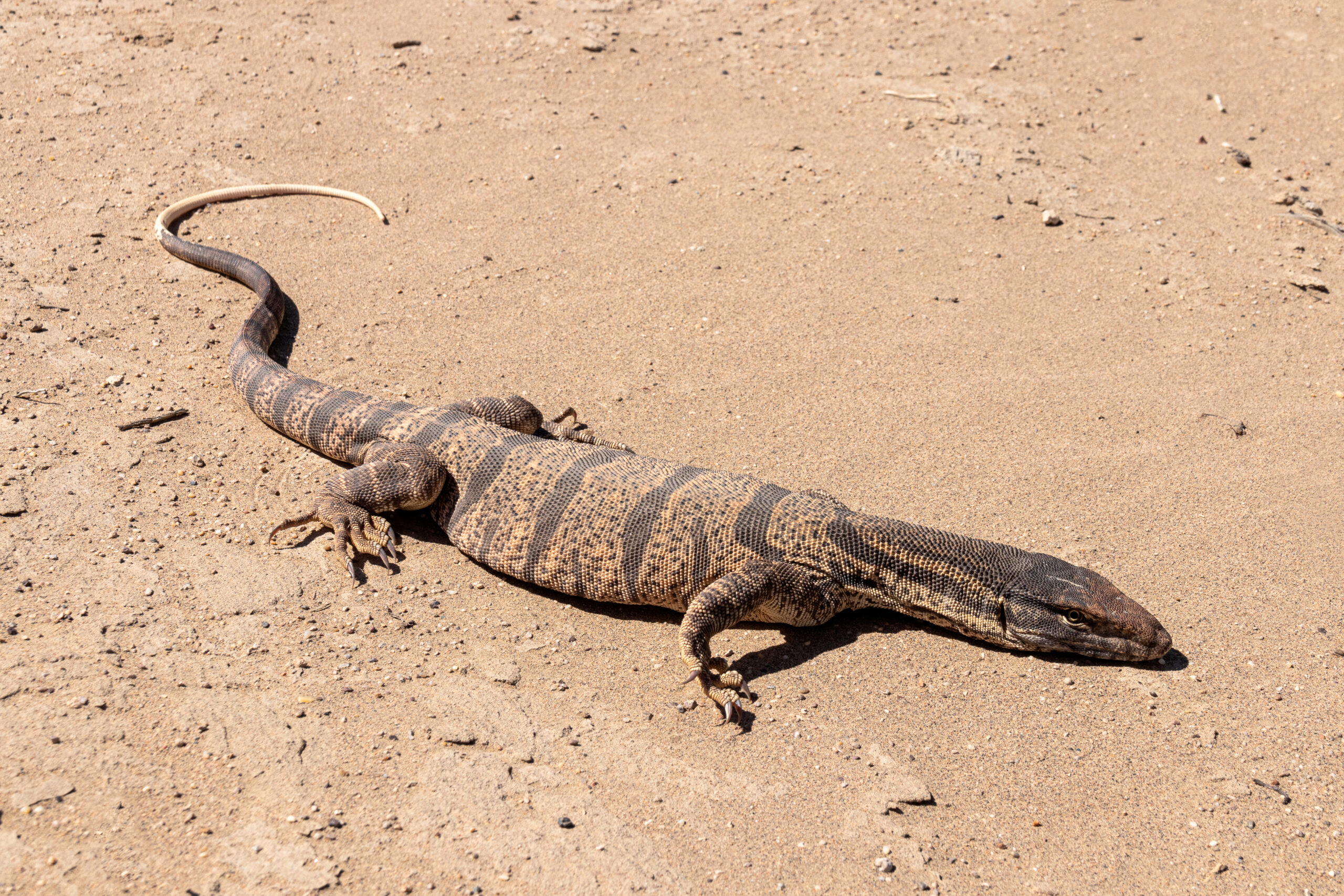
The Desert Monitor is a large, powerful lizard with a muscular body and long tail, well-suited for life in the harsh desert. Its skin is tough and rough, helping to prevent water loss and protect against the sun’s rays. This carnivorous reptile is an opportunistic feeder, consuming a wide range of prey, including small mammals, birds, and eggs. It is highly territorial, often seen basking on rocks to survey its domain. The Desert Monitor can travel long distances in search of food and water, making it a formidable survivor in its arid habitat.
Arabian Sand Boa (Eryx jayakari)
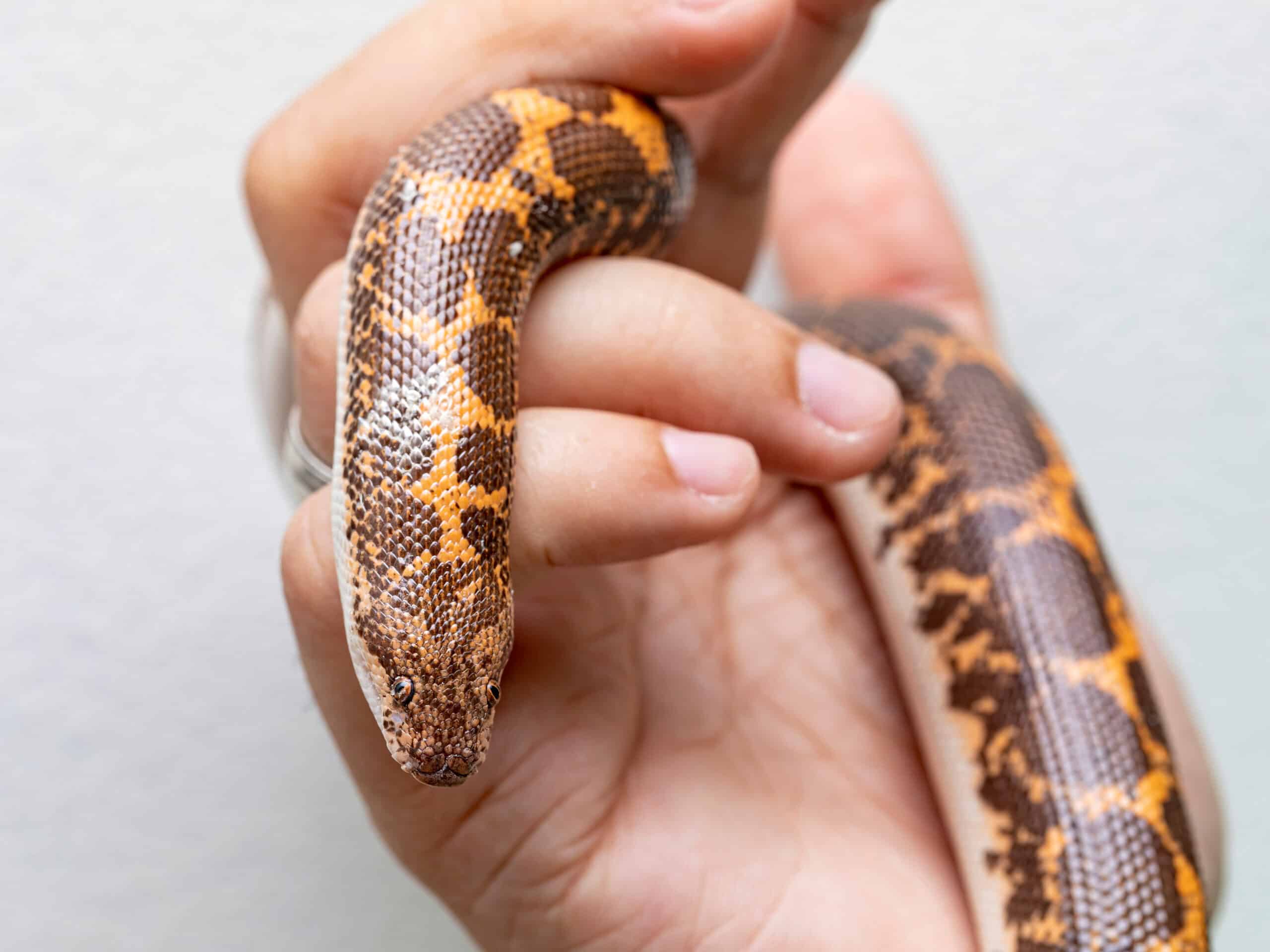
The Arabian Sand Boa is a small, burrowing snake that thrives in the sandy deserts of the Arabian Peninsula. Its body is short and stout, with a blunt head designed for digging through loose sand. This snake’s eyes are positioned on top of its head, allowing it to stay hidden while keeping a lookout for prey. The Arabian Sand Boa primarily feeds on lizards and small rodents, using its strong jaws to constrict its prey. Its ability to move effortlessly through sand makes it a master of desert camouflage and survival.
Eastern Collared Lizard (Crotaphytus collaris)

The Eastern Collared Lizard is a brightly colored reptile known for its distinctive black collar around the neck. This lizard is an agile predator, capable of running on its hind legs to catch insects and small vertebrates. Its vibrant blue and green scales provide excellent camouflage among desert rocks and vegetation. The Eastern Collared Lizard can also regulate its body temperature by basking in the sun or seeking shade. Its adaptability and striking appearance make it a standout in desert environments.
Sandfish Skink (Scincus scincus)

The Sandfish Skink is a unique reptile that “swims” through sand, using its streamlined body to glide beneath the surface. Its smooth, shiny scales reduce friction, allowing it to move quickly through loose desert sand. This skink has a pointed snout and small legs, perfectly adapted for its burrowing lifestyle. It feeds on insects and small invertebrates, catching them with remarkable speed. The Sandfish Skink’s ability to navigate and hunt in its harsh environment showcases its incredible adaptation to desert life.
Perentie (Varanus giganteus)
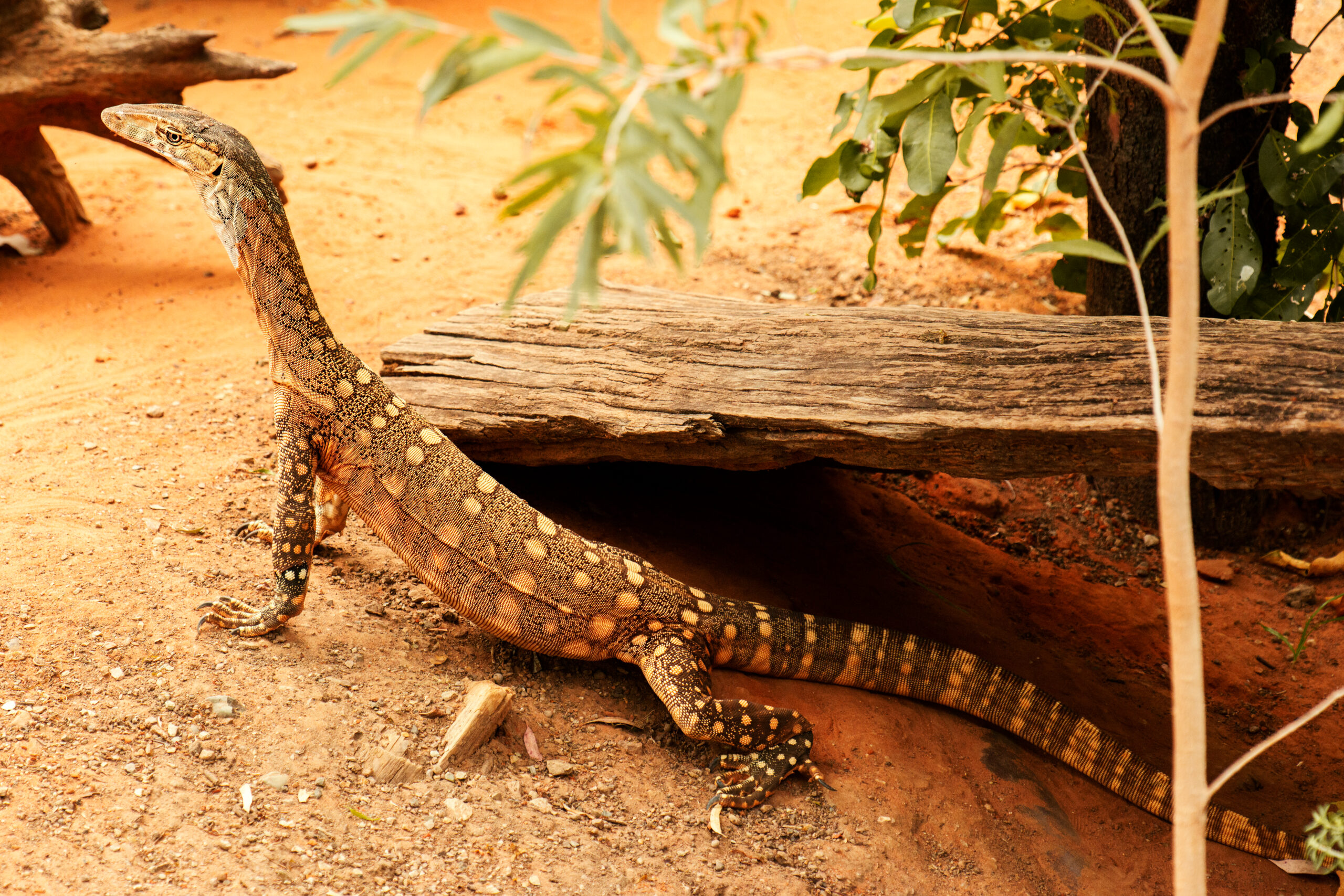
The Perentie is the largest monitor lizard in Australia, known for its powerful build and impressive hunting skills. This reptile can grow up to 8 feet long, making it a formidable predator in the desert. It has strong legs and sharp claws, which it uses to dig burrows and catch prey. The Perentie’s diet includes insects, small mammals, and even other reptiles, demonstrating its versatility as a hunter. Its ability to thrive in the arid outback makes it one of the most remarkable reptiles in desert regions.
Desert Night Lizard (Xantusia vigilis)
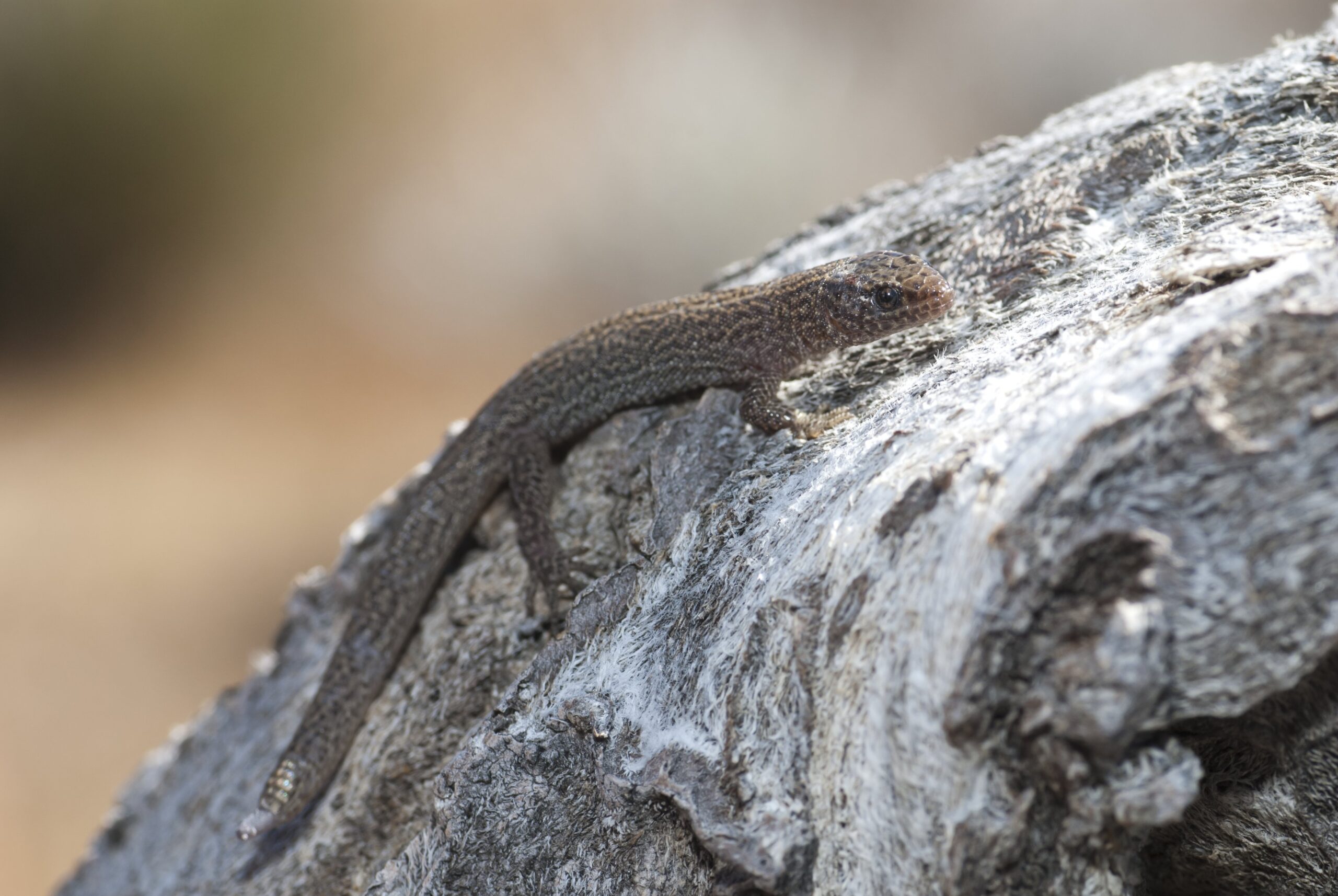
The Desert Night Lizard is a small, secretive reptile that spends most of its life hidden under rocks or within plant debris. This lizard has a long, slender body and smooth scales, which help it move quietly through its environment. It is nocturnal, coming out at night to feed on insects and small arthropods. The Desert Night Lizard’s ability to remain undetected by predators is a key to its survival. Its reclusive nature and specialized habits make it a fascinating desert dweller.
Gila Monster (Heloderma suspectum)
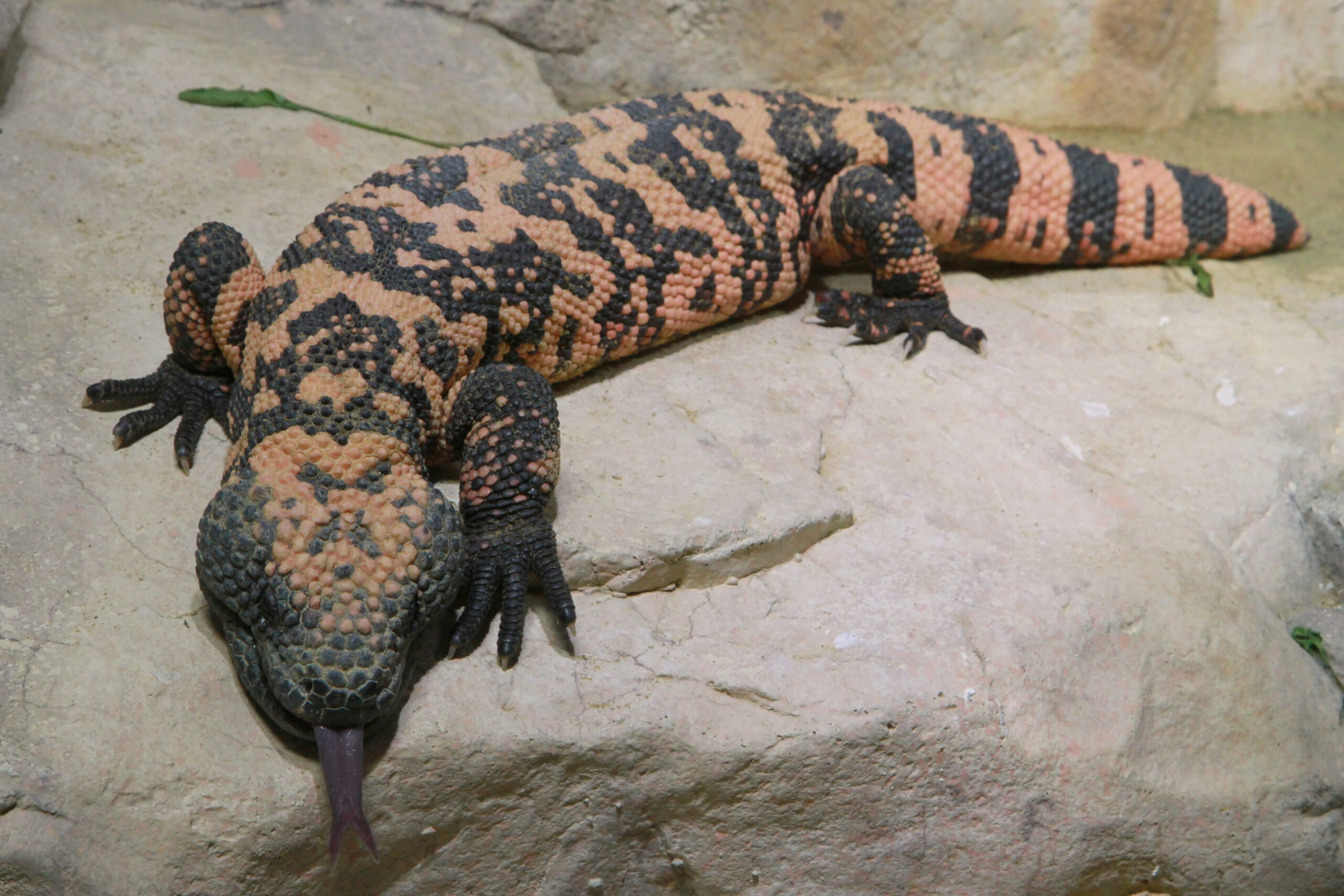
The Gila Monster is one of the few venomous lizards, with a powerful bite that delivers neurotoxic venom. It has a thick, beaded skin that provides protection against the harsh desert sun and predators. This lizard is slow-moving, relying on ambush tactics to catch prey, which includes small mammals, birds, and eggs. The Gila Monster spends most of its life in burrows, conserving energy and avoiding the extreme daytime heat. Its unique adaptations make it a formidable desert survivor.
Desert Tortoise (Gopherus agassizii)
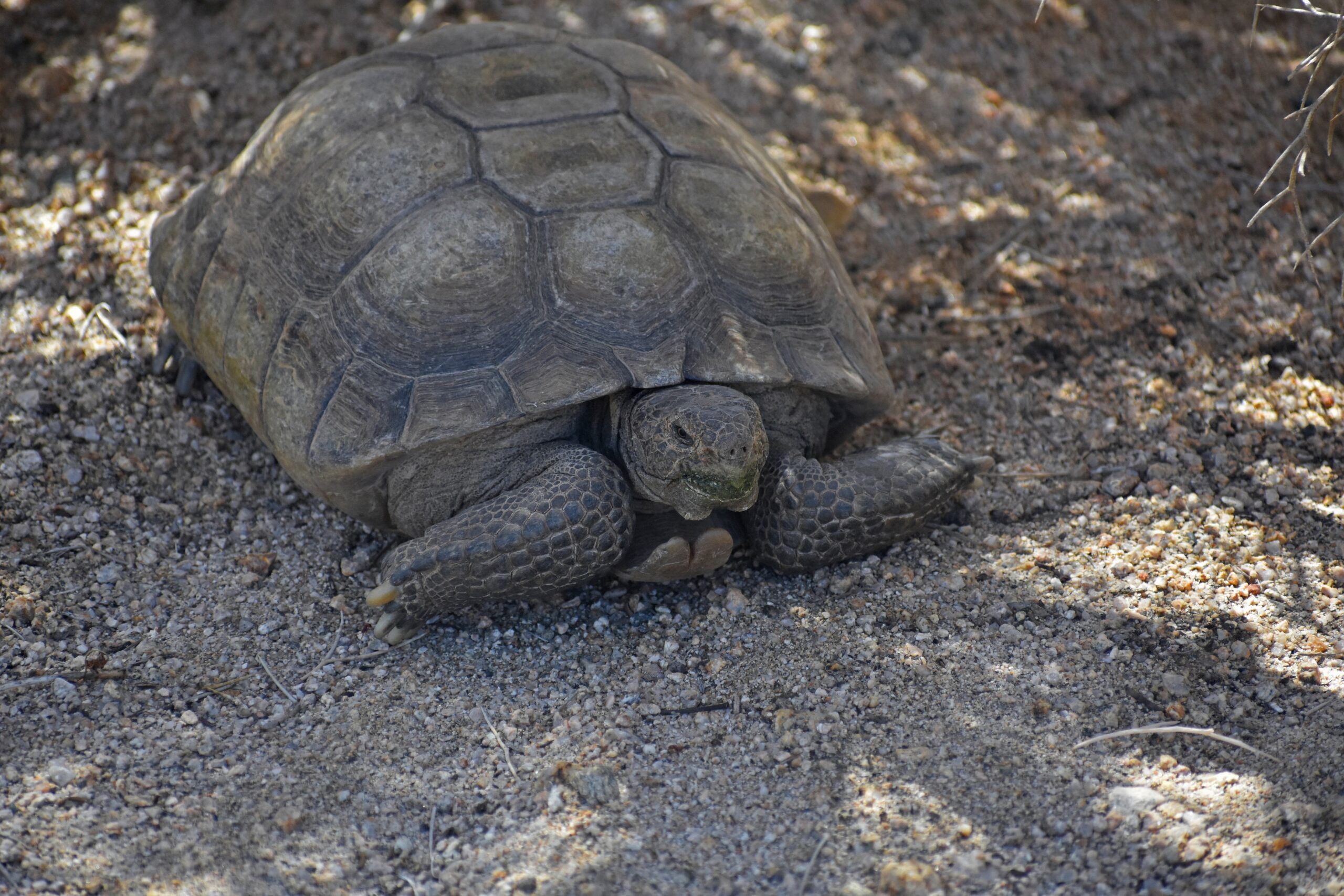
The Desert Tortoise is well-known for its ability to survive in arid conditions, living up to 80 years in the wild. It has a hard, domed shell that offers protection and helps regulate its body temperature. This tortoise is herbivorous, feeding on grasses, wildflowers, and cacti, which provide both food and moisture. It digs burrows to escape the intense desert heat, spending up to 95% of its life underground. The Desert Tortoise’s slow metabolism and water-conservation techniques are key to its survival in the desert.
Sidewinder Rattlesnake (Crotalus cerastes)
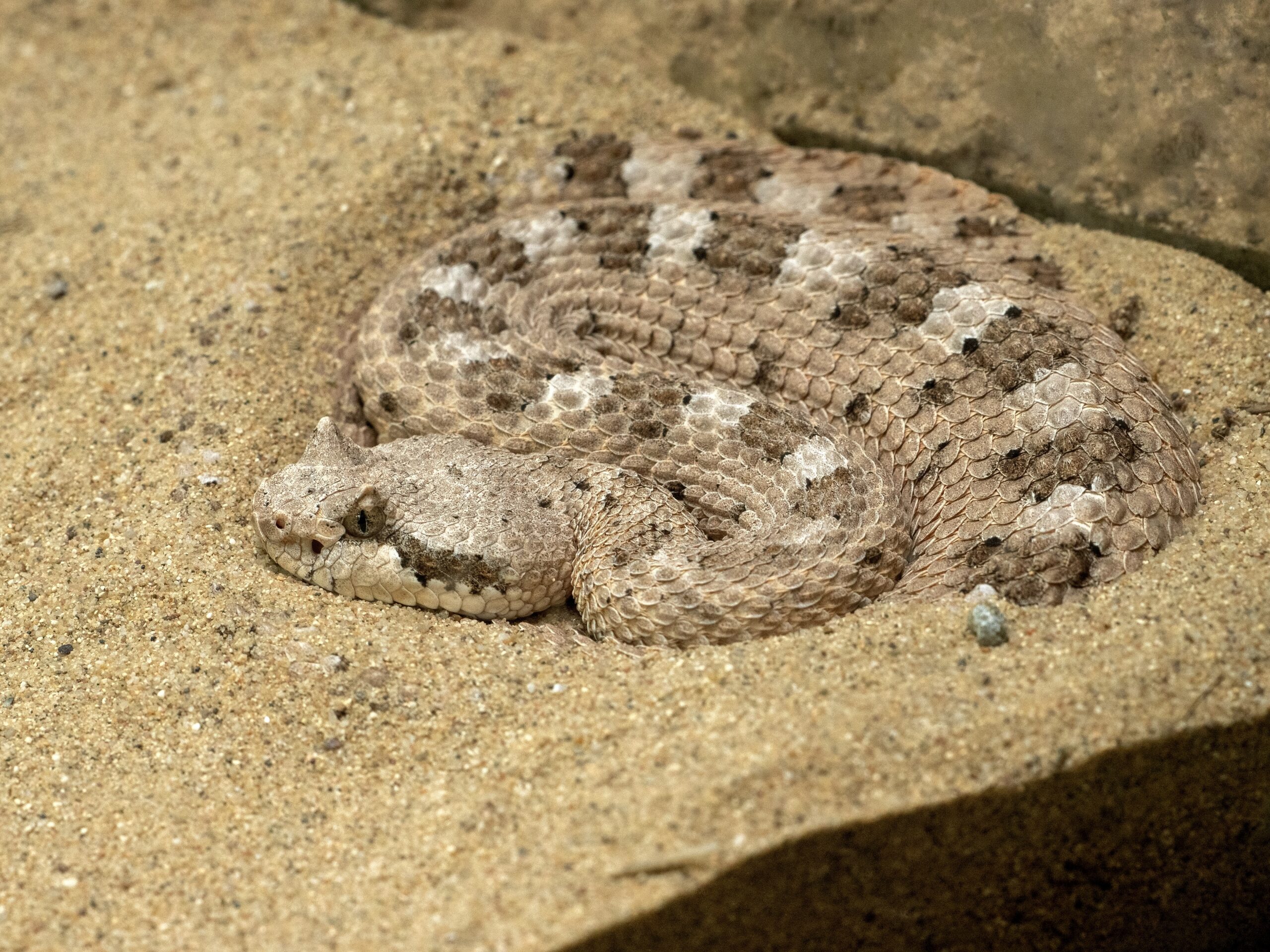
The Sidewinder Rattlesnake is famous for its unique sidewinding motion, which allows it to move quickly across loose sand. This small, venomous snake has specialized scales on its belly that reduce friction, making it an efficient desert traveler. It buries itself in the sand to ambush prey, which includes rodents, birds, and lizards. The Sidewinder’s heat-sensitive pits help it detect warm-blooded prey even in the cool desert nights. Its unique movement and hunting tactics make it a master of desert survival.
Bearded Dragon (Pogona vitticeps)

The Bearded Dragon is a popular desert lizard known for its distinctive throat pouch, which it inflates when threatened. It has a wide, flat body and spiny scales that provide protection and help regulate its body temperature. This lizard is omnivorous, eating a variety of insects, plants, and fruits, which makes it highly adaptable. Bearded Dragons are excellent climbers, often basking on rocks and branches to soak up the sun. Their ability to thrive in a range of desert conditions highlights their remarkable adaptability.
Egyptian Uromastyx (Uromastyx aegyptia)
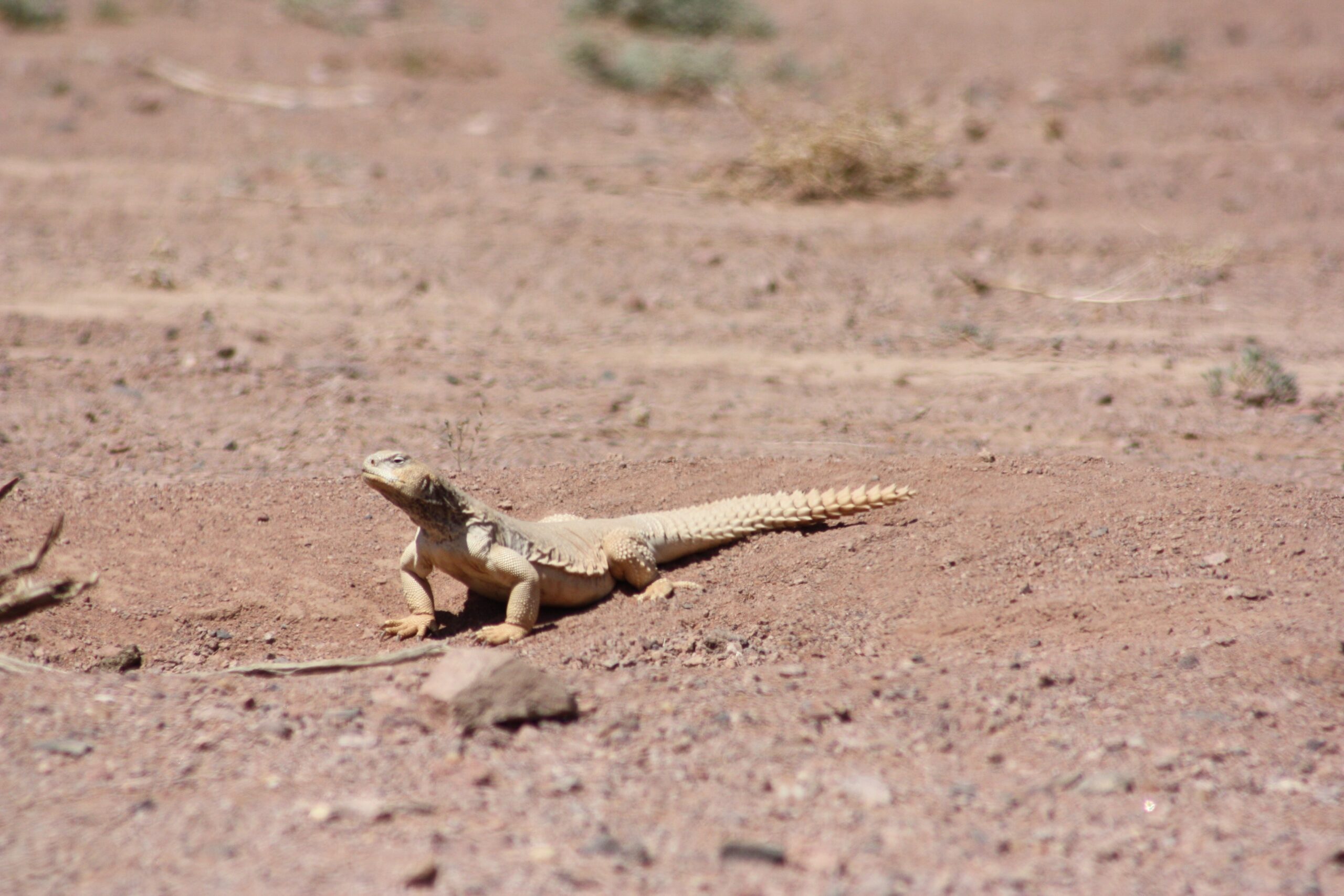
The Egyptian Uromastyx is a large, herbivorous lizard that inhabits the deserts of North Africa and the Middle East. It has a stout body and a tail covered in sharp spines, which it uses as a defense against predators. This lizard is well-adapted to extreme heat, spending the hottest part of the day in burrows to stay cool. It feeds on dry grasses, seeds, and leaves, which provide the moisture it needs to survive. The Egyptian Uromastyx’s ability to thrive in such harsh conditions makes it a fascinating desert reptile.
Western Banded Gecko (Coleonyx variegatus)
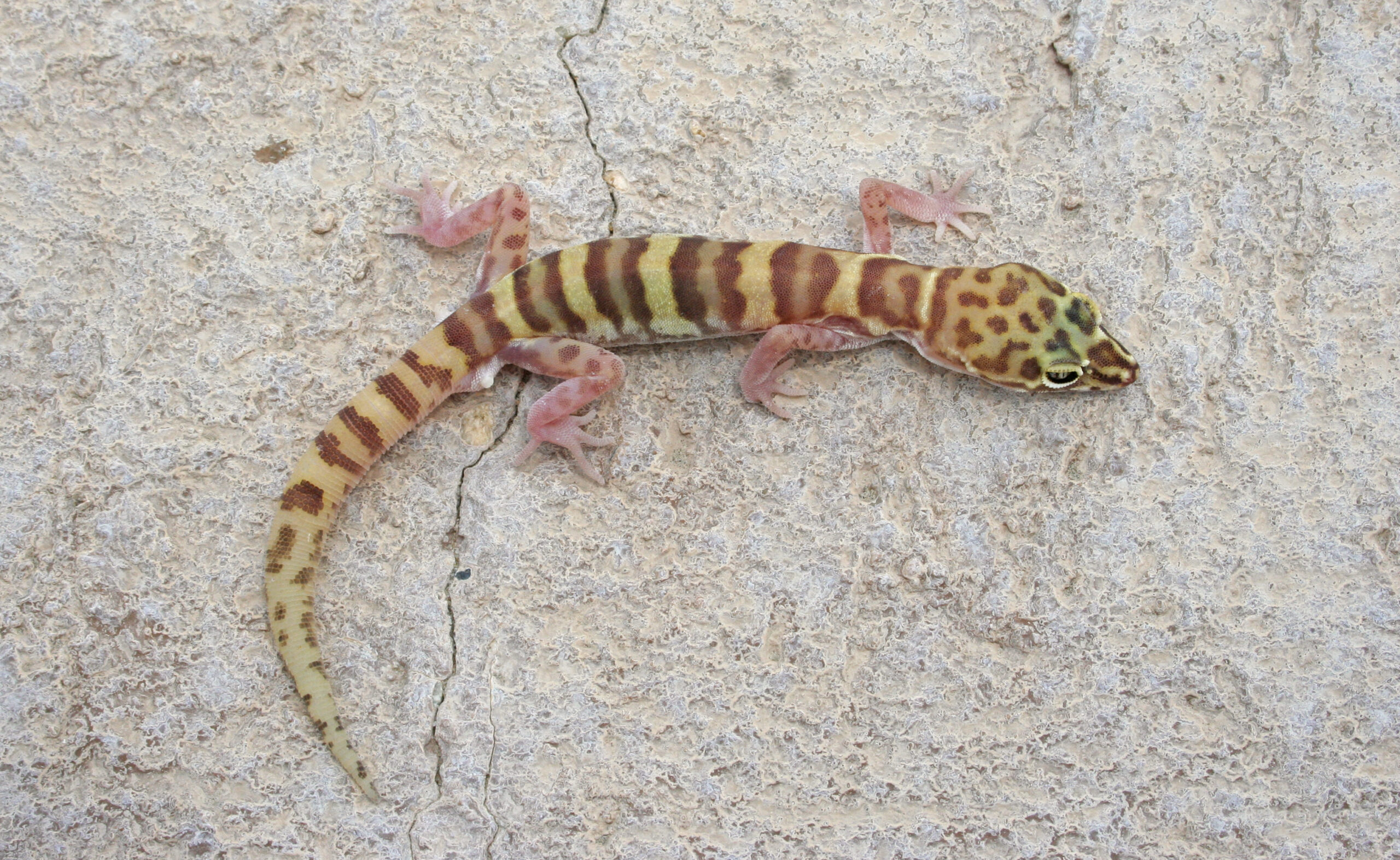
The Western Banded Gecko is a small, nocturnal reptile with smooth, glossy skin and distinctive bands across its body. It is primarily insectivorous, feeding on beetles, spiders, and other small invertebrates it hunts during the night. This gecko has large eyes and excellent night vision, which help it locate prey in the dark. It is known for its ability to detach its tail as a defense mechanism, distracting predators while it escapes. The Western Banded Gecko’s nocturnal habits and unique adaptations make it a successful desert dweller.
Sahara Sand Viper (Cerastes vipera)
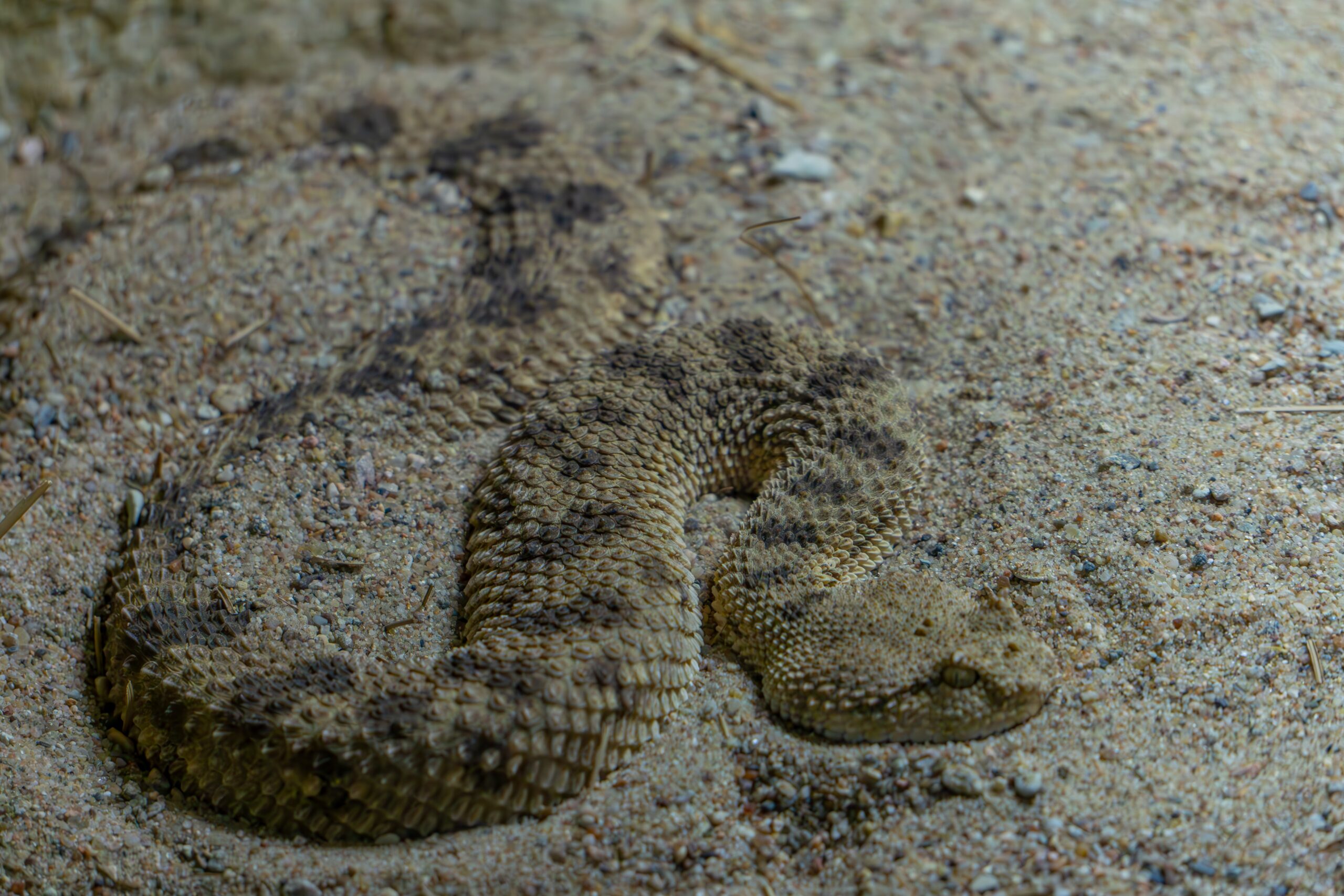
The Sahara Sand Viper is a small, venomous snake with a stout body and broad, triangular head. It is perfectly adapted to the sandy deserts of North Africa, where it buries itself just below the surface to ambush prey. This snake’s heat-sensitive pits allow it to detect warm-blooded animals, such as rodents and birds, even at night. It uses a sidewinding motion to move efficiently across loose sand, leaving behind distinctive tracks. The Sahara Sand Viper’s stealthy hunting tactics and venomous bite make it a fearsome desert predator.
Mojave Rattlesnake (Crotalus scutulatus)

The Mojave Rattlesnake is one of the most venomous rattlesnakes, with a potent neurotoxic venom that affects the nervous system. It has a distinctive rattle on its tail, which it uses to warn predators and potential threats. This snake is an ambush predator, lying in wait for prey such as rodents and lizards to pass by. The Mojave Rattlesnake is well-camouflaged in its desert surroundings, making it nearly invisible to both prey and predators. Its deadly venom and stealthy hunting methods make it a formidable desert survivor.
Thorny Devil (Moloch horridus)
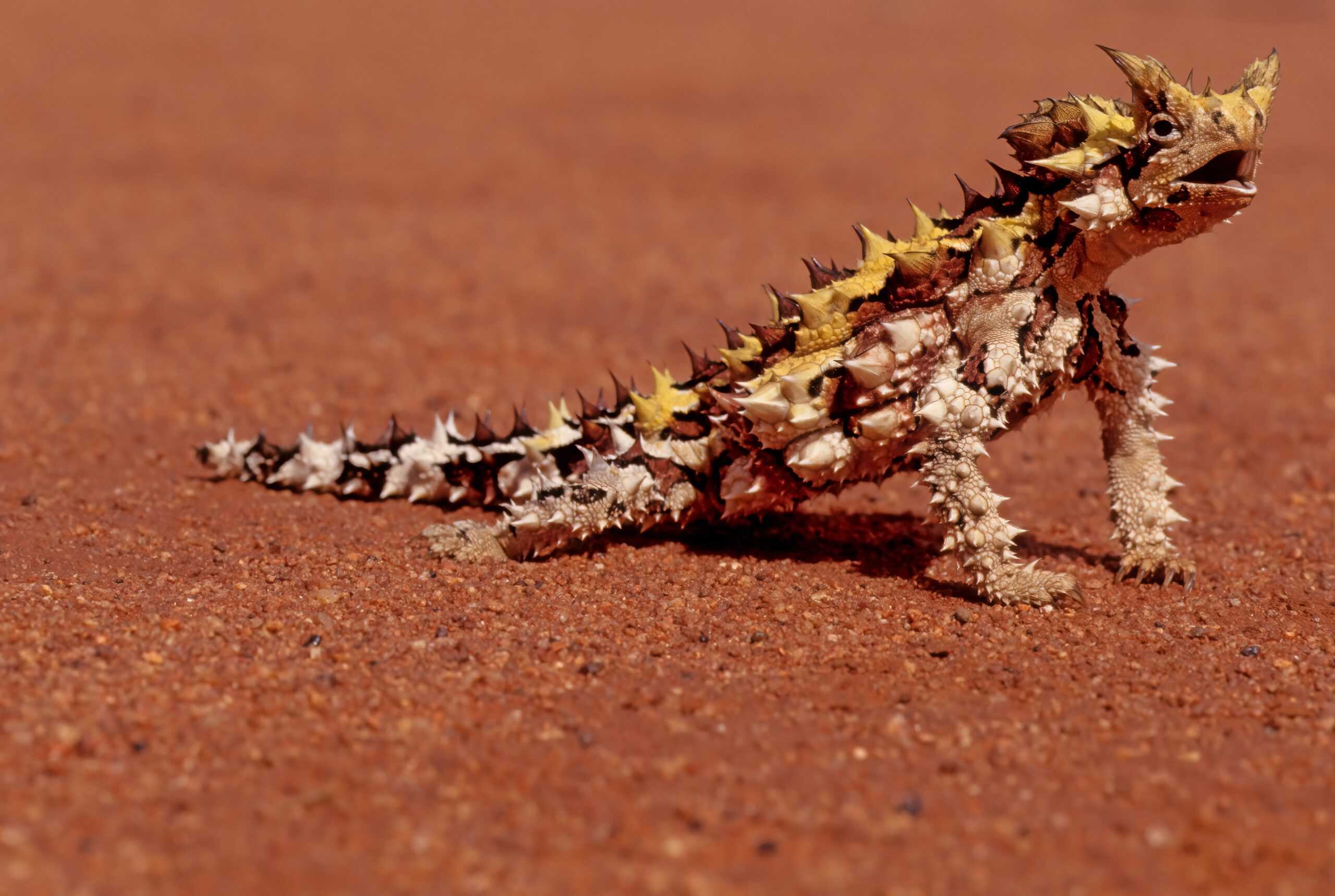
The Thorny Devil is a small, spiny lizard native to the arid deserts of Australia. Its entire body is covered in sharp, thorn-like scales that provide excellent defense against predators. This lizard has a unique method of drinking water; it collects moisture from dew and rainfall through grooves between its scales, which channel the water directly to its mouth. The Thorny Devil primarily feeds on ants, consuming thousands in a single meal using its sticky tongue. Its slow, jerky movements and excellent camouflage allow it to blend seamlessly into the desert landscape, making it a master of survival in harsh conditions.
This article originally appeared on Rarest.org.
More from Rarest.org
20 Most Coveted Vines and Climbers for Landscaping

Vines and climbers are essential for adding vertical interest and lush greenery to any garden or landscape. Read More.
The 8 Most Beautiful Commemorative Coins Ever Issued
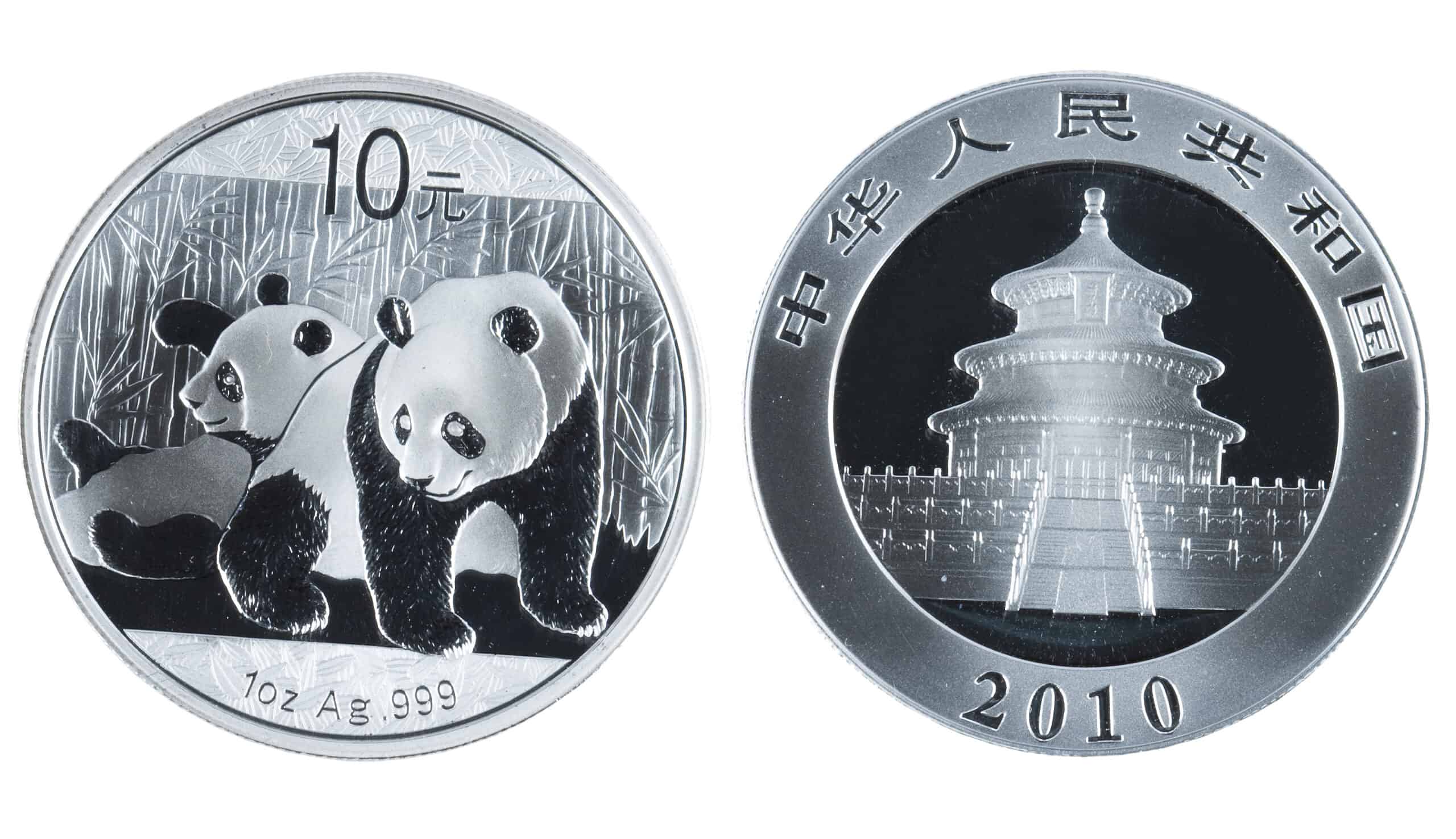
Commemorative coins are more than just currency; they are miniature works of art that capture significant moments, people, and symbols in history. Read More.
15 Iconic Wildlife Species Saved from Poaching

Poaching has posed a severe threat to countless wildlife species around the globe, driving many to the brink of extinction. Read More.
